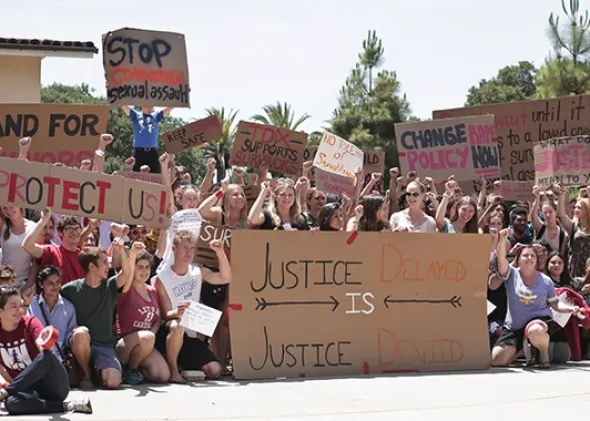Table of Contents
In a recent Review editorial, Review editor Alex Katz opines about the issue of sexual assault on the Stanford campus. He mostly focuses on the issues surrounding counting sexual assault, such as the fact that cross campus comparisons are impossible due to the hugely differing residential settings of different schools. However, his editorial misses a chance to expound on a key way to make Stanford’s campus a safer, healthier place to live. In his editorial he mentions that:
Third, educational initiatives aimed at increasing that reporting rate may inadvertently increase the number of reports of sexual assault.
I wouldn’t call this result “inadvertent.” Educational initiatives that encourage people who fear that they have been assaulted to come forward will increase the reporting rate. While this may, unfortunately, give the false impression that campus is becoming more dangerous (when in fact, as Alex notes, it’s merely a function of increasing the reporting rate up from a sad 10 percent), I think that it’s clear that having a higher reporting rate is most definitely an improvement. The more people that report sexual assault, the more likely that someone will be willing to testify. In some cases, due to the presence of alcohol and fuzzy memories, it’s (unfortunately) necessary to have multiple people come forward about one individual in order to have the police willing to prosecute. Too often, if the prosecution is unable to show a history of sexual violence, the perpetrator is able to walk, shielded by the defense of uncertainty, that perhaps the victim was “inviting” the behavior or that perhaps the girl really was so drunk that she “doesn’t know what she’s talking about.”
- 
An interesting way to look at whether the “upward trend” noted by the Daily article that Alex mentioned (note: see Alex’s piece or the Daily article for the explanation about 2003) is a result of an increase in reporting would perhaps be to look for any change in the number of prosecutions. A disproportionate increase in the number of prosecutions would indicate (i.e. the number of prosecutions increased by a higher percent that the number of assaults), in my eyes at least, that there had been an increase in reporting, not necessarily in assaults committed, as only if there were more people coming forward (perhaps about the same offender), and more people willing to testify (in a more open, accepting environment) could such an increase be possible. Flat prosecution numbers would indicate that overall sexual assault might actually be on the rise, as it would indicate that no critical mass of accusers had appeared around one offender or that the environment was still one where even those who came forward were unwilling to pursue a case against their assaulter.
Creating a community where people are unafraid to step forward about any instance of sexual violence is thus absolutely imperative. Many perpetrators of sexual assault are serial offenders and it is important that they not only be expelled from the Stanford community so that they do no more harm here, but also that they face legal sanctions. Only continued campaigns to encourage people to come forward can achieve this result.





